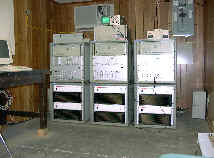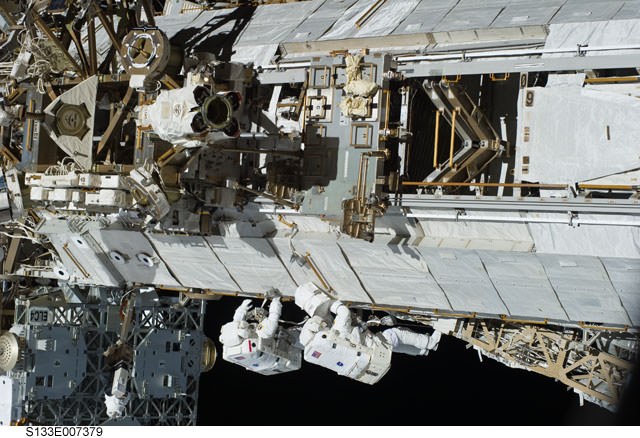[/caption]
About 100 tons of meteoroids bombard the Earth’s atmosphere every day. For spacecraft in Earth orbit, a collision with these particles could cause serious damage or catastrophic failure, and a hit on an astronaut or cosmonaut conducting extra-vehicular activities in space would be life-threatening, if not fatal. But before anyone steps outside the space shuttle or the International Space Station, NASA checks with data from Canadian Meteor Orbit Radar to determine if it’s safe.

Using a series of ‘smart cameras’, a one-of-a-kind triple-frequency radar system and computer modeling, CMOR provides real-time data, tracking a representative sample of the meteoroids around and approaching Earth, which are traveling at hypervelocity speeds averaging 10 km/s (22,000 mph).
The system is based at based at The University of Western Ontario.
“When it’s in orbit, the largest danger posed to the space shuttle is impact from orbital debris and meteoroids,” said Peter Brown, Western physics and astronomy professor. By knowing when meteoroid activity is high, NASA can make operational changes such as shielding vulnerable areas of the shuttle or deferring space walks so astronauts remain protected.
Brown told Universe Today that the meteoroids tracked by the system are from 0.1mm and larger, and it detects the ionization trails left by these meteoroids and not the solid particles themselves.
CMOR records about 2,500 meteoroid orbits per day by using a multi-frequency HF/VHF radar. The radar produces data on the range, angle of arrival, and velocity/orbit in some instances. In operation since 1999, the system has measured 4 million individual orbits, as of 2009.
NASA makes daily decisions based on the data from this system. Radio waves are bounced off the ionization trails of meteors by the radar, allowing the system to provide the data necessary to understand meteoric activity on a given day. “From this information we can figure out how many meteoroids are hitting the atmosphere, as well as the direction they’re coming from and their velocity,” Brown said.
NASA says the greatest challenge is medium size particles (objects with a diameter between 1 cm to 10 cm), because of how difficult they are to track, and they are large enough to cause catastrophic damage to spacecraft and satellites. Small particles less than 1 cm pose less of a catastrophic threat, but they do cause surface abrasions and microscopic holes to spacecraft and satellites.

But the radar information from the Canadian system can also be combined with optical data to provide broader information about the space environment and produce models useful during the construction of satellites. Scientists are better able to shield or protect the satellites to minimize the effect of meteoroid impacts before sending them into space.
The ISS is the most heavily shielded spacecraft ever flown, and uses “multishock” shielding, which uses several layers of lightweight ceramic fabric to act as “bumpers,” which shocks a projectile to such high energy levels that it melts or vaporizes and absorbs debris before it can penetrate a spacecraft’s walls. This shielding protects critical components such as habitable compartments and high-pressure tanks from the nominal threat of particles approximately 1 cm in diameter. The ISS also has the capability of maneuvering to avoid larger tracked objects.
The original radar system was developed for measuring winds in the Earth’s upper atmosphere, and has since been modified by Brown and his fellow researchers to be optimized for the kinds of astronomical measurements currently being used by NASA.
When the radar detects meteors, the software analyzes the data, summarizes it and sends it to NASA electronically. Brown’s role is to keep the process running and continue to develop the techniques used to obtain the information over time.
Western has been working co-operatively with NASA for 15 years, and has been involved with its Meteor Environment Office (MEO) since it was created in 2004. The role of the MEO is predominantly to evaluate risk. “Everyone knows that rocks fly through space,” says MEO head Bill Cooke. “Our job is to help NASA programs, like the space station, figure out the risk to their equipment, educate them on the environment and give them models to evaluate the risks posed to spacecrafts and astronauts.”
Source: University of Western Ontario, NASA


Do they run periodic survey of ISS modules outer shell for any damage? How may strikes do they find per year?